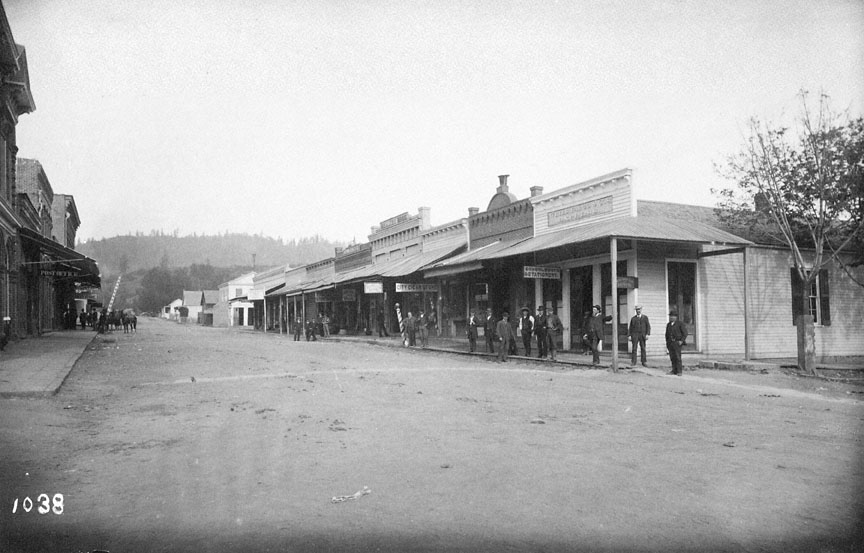- Catalog No. —
- OrHi 12135
- Date —
- c. 1890
- Era —
- 1881-1920 (Industrialization and Progressive Reform)
- Themes —
- Geography and Places
- Credits —
- Oregon Historical Society
- Regions —
- Southwest
- Author —
- Peter Britt
California Street, Jacksonville, c1890
This photograph looks west on Jacksonville’s main business street, California Street, about 1885. The photographer, Swiss-born Peter Britt, arrived in Jacksonville in 1852 to mine for gold, but found photography more profitable. The streetscape of this historic mining town looked virtually the same when the town was placed on the National Register of Historic Places in 1966.
Founded when gold flakes were discovered in a seasonal creek now known as Rich Gulch, Jacksonville prospered in the 1850s, when it developed as a supply point for mining prospects throughout the region. By 1885, the town was the seat of Jackson County—a new courthouse was built in 1884— but the Oregon & California Railroad had passed it by. When this photograph was taken several years later, Jacksonville was a somnolent village, its activity transferred to Medford several miles east. The block of small shops includes wooden frame buildings as well as several made from local brick, with wooden or metal awnings covering the wooden sidewalks. The corner building at the right was built in 1863 as a bank and express office for Cornelius C. Beekman, who is pictured leaning against the post.
Jacksonville lived in a state of economic stagnation for many decades, a circumstance which preserved its numerous structures from 1850s through the 1880s. During the Depression years of the 1930s, Jacksonville residents took up backyard gold mining at sites that had been abandoned eighty years before. As a virtually intact example of a small Western mining and commercial town of the period, Jacksonville was identified as an historic district, one of the first to be created after the passage of the National Historic Preservation Act of 1966. A complete inventory of the hundreds of structures and sites in the city was not completed until 1980. The city has since struggled to preserve its historical status in the face of recent population growth, pressures for a highway bypass, heavy tourist use, and challenges to Oregon’s land use laws.
Further Reading:
Engeman, Richard H. The Jacksonville Story. Medford, Oreg., 1990.
Written by Richard Engeman, © Oregon Historical Society, 2005.
